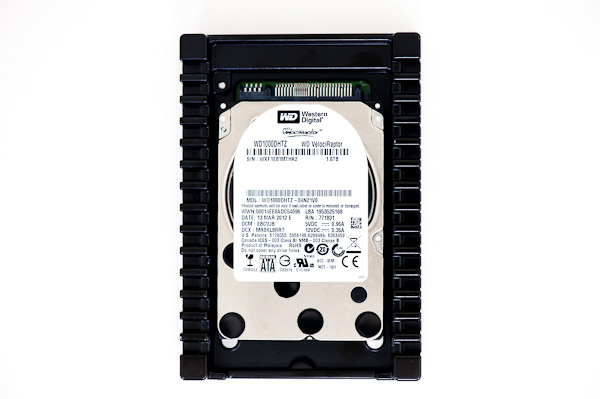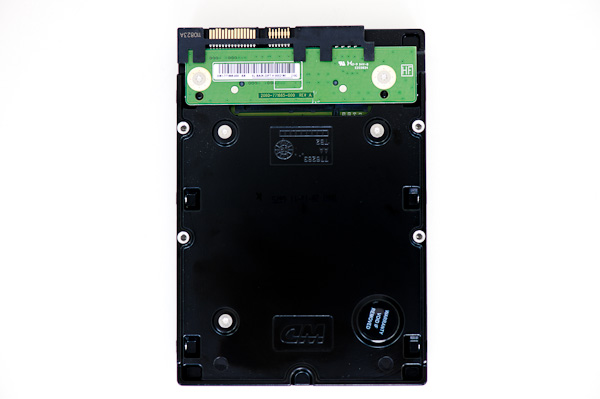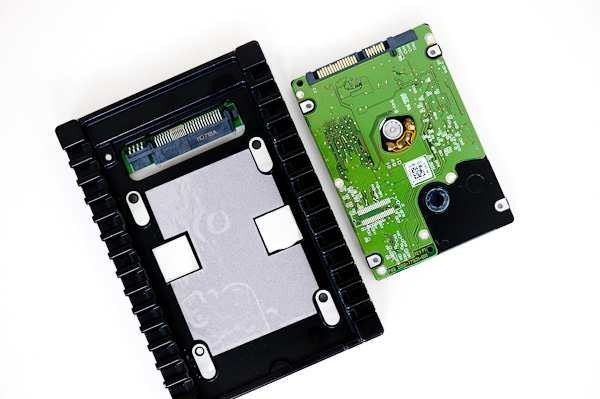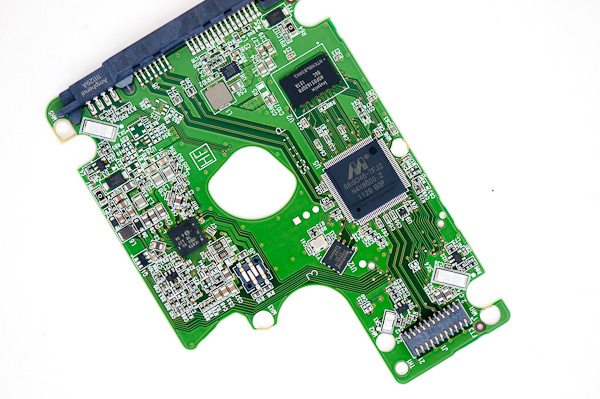Western Digital VelociRaptor 1TB (WD1000DHTZ) Review
by Anand Lal Shimpi on April 16, 2012 8:00 AM EST- Posted in
- Storage
- HDDs
- Western Digital
- VelociRaptor
There was a time when Western Digital's Raptor (and later, the VelociRaptor) was a staple of any high-end desktop build. Rotational media could only deliver better performance by increasing aereal density or spindle speed. In a world dominated by hard drives that focused on the former, WD decided to address both. By shipping the only mainstream (e.g. not SCSI or SAS) 3.5" hard drive with a 10,000 RPM spindle speed, WD guaranteed that if you needed performance, the Raptor line was the way to go.
Two years ago we met the most recent update to the VelociRaptor line: the VR200M. While it raised the bar for the VelociRaptor, WD saw its flagship competing in a new world. SSDs were now more affordable, resulting in even more desktop builds including an SSD. Although the high dollar-per-GB cost associated with SSDs demanded that desktop users adopt a two-drive model (SSD + HDD), for storage of large media files a standard 5400RPM or 7200RPM drive was just fine. After all, moving large files is mostly a sequential operation which plays to the strengths of most consumer drives to begin with.
There are still users who need more storage than an SSD can affordably provide, and who demand speed as well. Although photo and video editing is great on an SSD, a big enough project would have difficulty sharing a 128GB SSD with an OS, applications and other data. For those users who still need high performance storage that's more affordable than an SSD, the VelociRaptor is still worthy of consideration. There's just one problem: Moore's Law is driving the cost of SSDs down, and their capacities up. The shift to solid state storage is inevitable for most, but to remain relevant in the interim the VelociRaptor needed an update.
Today Western Digital is doing just that. This is the new VelociRaptor, available in 250GB, 500GB and 1TB capacities:
| WD VelociRaptor Historical Comparison | |||||
| WD VelociRaptor VR333M | WD VelociRaptor VR200M | WD VelociRaptor VR150M | |||
| Capacity | 1000/500/250GB | 600/450GB | 300/150GB | ||
| Interface | 6Gbps SATA | 6Gbps SATA | 3Gbps SATA | ||
| Advanced Format (4K Sectors) | Y | N | N | ||
| Rotational Speed | 10000 RPM | 10000 RPM | 10000 RPM | ||
| Buffer Size | 64MB | 32MB | 16MB | ||
| Transfer Rate Buffer to Disk | 200 MB/s | 145 MB/s | 128 MB/s | ||
| Platter Density | 333GB | 200GB | 150GB | ||
| Warranty | 5 years | 5 years | 5 years | ||
The basic design remains unchanged. Take a 2.5" drive with platters spinning at 10,000 RPM and pair it with a 3.5" adapter that also acts as a heatsink. Internally the drive gets all of the expected updates. Platter density is now up to 333GB (3 platters for the 1TB drive, 2 for the 500GB drive and 1 for the 250GB). All members of the new VelociRaptor family feature a 64MB DDR3 cache. Combine that with some firmware updates and you've got a recipe for larger capacities and higher performance.
The drive is available today and retails for $319 for the 1TB model, $209 for the 500GB model and $159 for 250GB. These prices are a bit lower than what the VelociRaptor VR200M launched at two years ago (the 500GB is significantly cheaper than the old 450GB launched at).
| WD VelociRaptor Lineup | ||||||
| WD1000DHTZ | WD5000HHTZ | WD2500HHTZ | ||||
| Capacity | 1TB | 500GB | 250GB | |||
| MSRP | $319.99 | $209.99 | $159.99 | |||
| Cost per GB | $0.319 | $0.419 | $0.639 | |||
Compared to standard 3.5" drives, the VelociRaptor is quite expensive. You can buy a 3TB 7200RPM drive at roughly $0.06 per GB, compared to $0.319 per GB for the most cost effective VelociRaptor. Compared to an SSD however, the VRs are still cheaper - although not by a ton if you compare to a low capacity drive. Samsung's SSD 830 (128GB) will cost you $1.36 per GB.














92 Comments
View All Comments
justniz - Monday, April 16, 2012 - link
As this is apparently just a 2.5" SATA drive attached to a big heatsink, would there be any issues if you unmounted it from the heatsink and put it in a laptop?Does the drive really generate so much heat it needs a heatsink to run?
I'm guessing that the only real problem would be because its a 10k spin speed it consumes slightly more power than a conventional drive, so your maximum time on just battery power would suffer a little.
kyuu - Monday, April 16, 2012 - link
Sticking one of these in a laptop would probably be a bad idea due to power usage, noise, and heat.kyuu - Monday, April 16, 2012 - link
Oh, and vibration.jabber - Monday, April 16, 2012 - link
Yeah and arent they thicker too?Nihility - Monday, April 16, 2012 - link
It's twice as thick as a 7mm drive.kmmatney - Monday, April 16, 2012 - link
For a laptop, the Seagate Momentus XT is just a way better option...TiGr1982 - Tuesday, April 17, 2012 - link
It is . Recently I upgraded my laptop (Acer 7552G, AMD Danube platform, SB850 sourhbridge) with Seagate Momentus XT 750 GB, and now it runs MUCH faster than before, because HDD is no longer the bottleneck.eanazag - Monday, April 16, 2012 - link
I won't buy the mobile Seagate XT with NAND simply because it does not support RAID. Has anyone RAIDed an XT and have some reliability experience on this in RAID 5, 1, and 0? I would opt for a few of these for cheap storage servers and when SSD caches fail to hold the requested data. I do wish the power usage was a little lower, but this is a really inexpensive enterprise drive.I bought 74GB Raptors when the max size was 150GB. I had 2; one is still chugging and one keeled over after 6 years. The dead one died in a VMware server where I was using it to hold install ISOs. I have been happy with them.
With linear scaling I like 2 or 3 of these in RAID 0. 400MB-600MB of seq. read and write.
kyuu - Monday, April 16, 2012 - link
What? You can RAID the Momentus XTs just fine. Where did you hear that you can't RAID them?Ramon Zarat - Monday, April 16, 2012 - link
Still have the 36GB version in my file server boot drive (used to have 2 in RAID0 on my main computer). Has been running practically non stop for nearly 10 years now! Not even a single bad sector. Amazing quality.